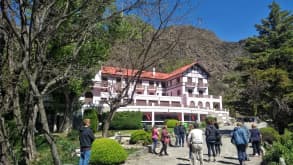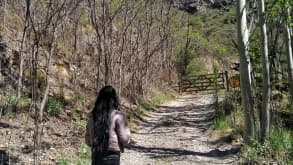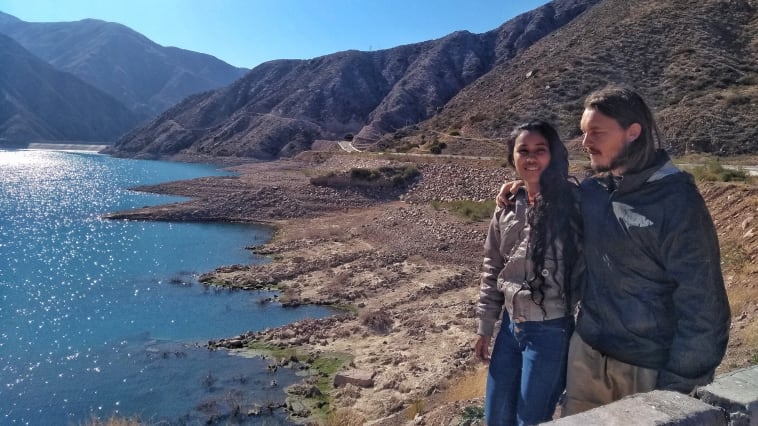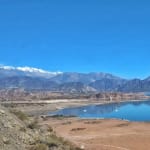Popular Topics
Trip Report
Mendoza the charming city of wine
Mendoza is located on the highest mountain in South America. It is a beautiful city with a huge green area and also known for being the main wine producing region in Argentina.
South AmericaArgentina, Chile4 days / October 2019
Highs & Lows
Mendoza wines are very good
Mendoza shops are closed for a long time from 12:00 to 17:00 in the afternoon, so for me it was complicated.
Itinerary Overview
Mendoza is a true paradise for wine lovers. But the destination has many attractions besides visiting its wineries: that is where Mount Aconcagua is located, the highest mountain in the southern hemisphere - it is almost 7 thousand meters high.
There are also two famous ski centers, Los Penitentes and Las Leñas, for those who want to enjoy the destination in winter and tour options in the summer, when the Andes Mountains become the perfect setting for ecotourism and adventure activities. There are also many options for visiting wineries and vineyards to learn about its history, how production works and tasting wines.
All tours I did was with a tour agency, like excursion, going by bus with a group of about 30 people. But it is also possible to hire a private tour or go by rental car.

"SHELTER" ACONCAGUA MOUNTAIN


 7+
7+The High Mountain tour accompanies National Route 7, is a full day tour as it is 400km (round trip), it is very tiring But the trip will compensate with incredible landscapes of the Andes, which are always covered with snow . The tour crosses the pre-mountain range, goes through the intriguing Puente del Inca and reaches the Andes, and if you are lucky with the weather you can even take a picture of Aconcagua. The highest point reached on the tour is Cristo redentor of Los Andes, at 3,900 meters above sea level, which indicates the border with Chile.
Dam Potrerillos:
The first attraction of the tour is just 60km away from the center of Mendoza. The dam, built in 1999, is responsible for supplying the city during the dry season - including irrigating the wineries - and also for generating electricity. Usually tours do not usually enter the dam, but make a quick stop on the hillside for you to observe the landscape and Lake Mendoza. Be sure to appreciate the contrast of the white mountains with the blue waters.
Inca Bridge:
The curious yellow bridge that sits directly over the Las Cuevas River, is a natural geological formation, caused by erosion and the sedimentation process that occurred millions of years ago. The yellowish color of the rocks is due to the presence of sulfur and other minerals in its composition.
In the 1920s, a thermal water hotel called Puente del Inca was built around the river, but today only its ruins can be seen there: in 1965 there was an avalanche in the region and the hotel's structure couldn't resist. In the 1920s, a thermal water hotel called Puente del Inca was built around the river, but today only its ruins can be seen there: in 1965 there was an avalanche in the region and the hotel's structure could not resist. Today, the only other construction around the bridge is a small chapel, the only one that withstood the avalanche. Right next door there is also a nice handicraft market.
Parque Provincial do Aconcágua
In the park of 71 thousand hectares is Mount Aconcagua With 6,962 meters of altitude, Aconcagua is the highest mountain in the entire southern hemisphere and the second largest in the world.
During the summer, from December to March, mountain climbers from all over the world visit Mendoza to venture to the top of Aconcagua. There are also options for light and short trails, for all levels.
PASO CRISTO REDENTOR
el Paso Cristo Redentor is the part of the crossing of the Andes between Mendoza (in Argentina) and Los Andes (in Chile) is the main link between the two countries and constitutes one of the most beautiful stretches of road in South America. There are about 200 km of road winding mountains of various colors, snowy peaks, tunnels, rivers, lakes and cliffs.
At the crossing of the Cordillera the mountains are very high and the vegetation is almost nonexistent. Even in summer you can see snow accumulated at the highest peaks. Much of the route is accompanied by the River Mendoza and the old train line deactivated, full of metal bridges. There is a stretch where the road was squeezed between the river and the mountains, so several tunnels were built in the stones.

Reserva Natural Villavicencio



The Villavicencio Nature Reserve has an important source of mineral water, this reserve occupies a large mountainous territory with about 70 thousand hectares that is 50 km from the center of Mendoza. To get there, you will pass by the Camino de Las 365 Curvas, a winding and very beautiful entrance that, in the past, was a connection service between Mendoza and Santiago.
The way is through Ruta Provincial 52, which is a continuation of Av. General San Martín, a long avenue that runs through the city of Mendoza. When leaving the urban area the landscape becomes desert, with vegetation typical of arid climates, and the road has an immense straight line, about 15 km long.
After many curves, already going up the mountains, the first stop was at the center of attention to visitors of the Villavicencio Nature Reserve, where the forest guards who care for the area are also home. After a few miles of curves, already going up the mountains, the first stop was at the center of attention for visitors to the Villavicencio Nature Reserve, where the forest guards who care for the area are located.
One of the houses has several educational panels, with information about the local fauna and flora. In the external area there is a cactus garden and a space with an exhibition of different types of stones and fossils found in the region. We went back to the bus and continued towards the Hotel Termas Villavicencio, in which it is disabled, it was built in 1940 and for a long time it functioned as a SPA center for Thermal Waters, many visitors days.
The hotel building remains intact, but the visit is restricted to its garden and outdoor areas. It isn't possible to visit the halls and rooms, but they say that many environments remain intact, with their original furniture.

Bodegas y Cia Florio



Wine production is the main economic activity in Mendoza and the one that most takes tourists to the city. It's possible to visit many wineries, places where wine tastings take place.
We visited Bodegas y Viñedos Florio y Cia that 30 min (25.8 km) from mendoza First they told us about the history of that winery while we passed through the vineyards. Then, a class on wine production and the processes used in the winery: fermentation tanks and barrels. Finally, the tasting, there was also the option to buy wines, olive oil,
Q & A
Restaurant recommendations?
La Peatonal Sarmiento there are a lot of restaurants, bars and coffeePacking tips?
If you go in the summer to Mendoza take light dresses, shorts and flip flops are perfect. In winter, you will need warm clothes. Since you will probably visit wineries and go horseback riding, wear comfortable clothes and sturdy bootsTransportation Tips?
I recommend that you rent a car to do a tour in the high mountains because going on an excursion in a bus is a short time to stay in the places of this tour.



